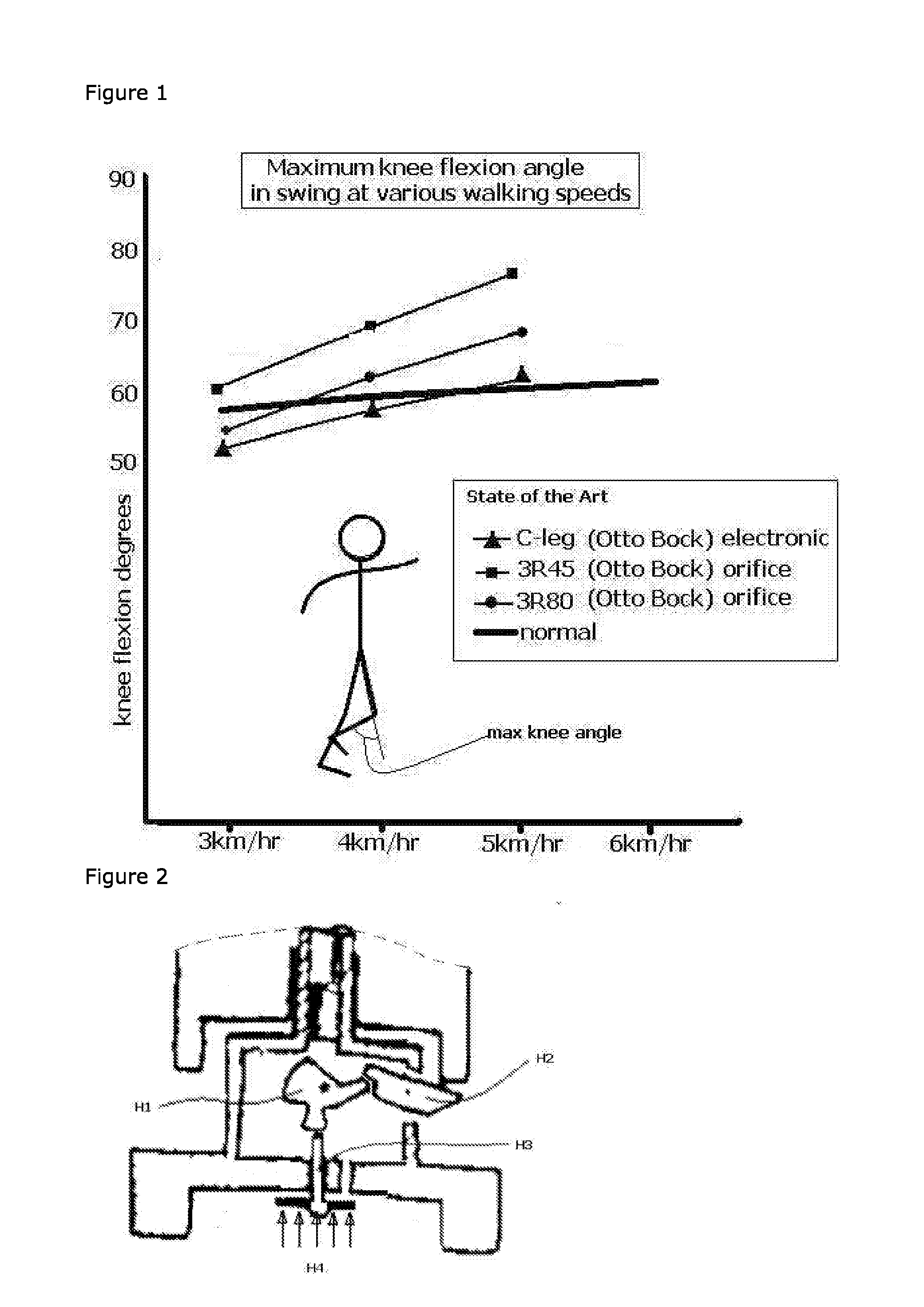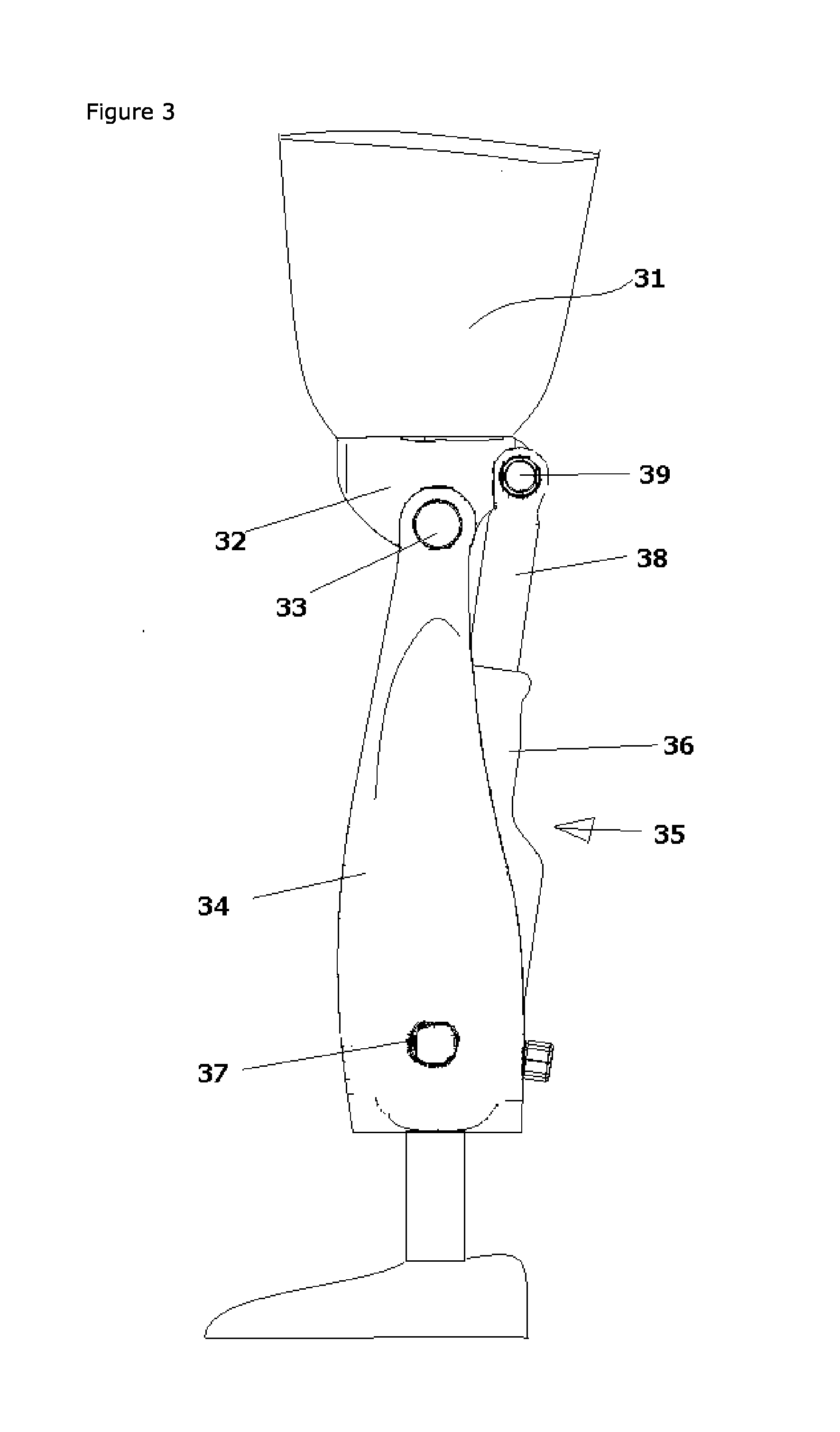Hydrualic prosthetic joint
- Summary
- Abstract
- Description
- Claims
- Application Information
AI Technical Summary
Benefits of technology
Problems solved by technology
Method used
Image
Examples
Embodiment Construction
Definitions
[0036]The following terms have specific meanings and it is intended that reference shall be made to this lexicon in event of any doubt:
[0037]Brace: a support device to maintain a relative position of a limb with respect to the trunk or another limb; part of an external framework arrange about and intended to support limbs.
[0038]Hydraulic fluid: a substantially incompressible fluid operable in hydraulic lines, hydraulic rams and hydraulic systems.
[0039]Hydraulic damper: a hydraulic device comprising at least a first variable volume of hydraulic fluid, wherein the volume of hydraulic fluid retained within the hydraulic actuator is proportional to an amount of actuation associated with a joint to which the hydraulic damper is coupled.
[0040]Prosthesis: an artificial part such as an artificial limb; an artificial or mechanical aid such as a brace.
[0041]Prosthetic joint: an artificial joint associated with the repair or replacement of a skeletal joint; the term includes externa...
PUM
 Login to View More
Login to View More Abstract
Description
Claims
Application Information
 Login to View More
Login to View More - R&D
- Intellectual Property
- Life Sciences
- Materials
- Tech Scout
- Unparalleled Data Quality
- Higher Quality Content
- 60% Fewer Hallucinations
Browse by: Latest US Patents, China's latest patents, Technical Efficacy Thesaurus, Application Domain, Technology Topic, Popular Technical Reports.
© 2025 PatSnap. All rights reserved.Legal|Privacy policy|Modern Slavery Act Transparency Statement|Sitemap|About US| Contact US: help@patsnap.com



